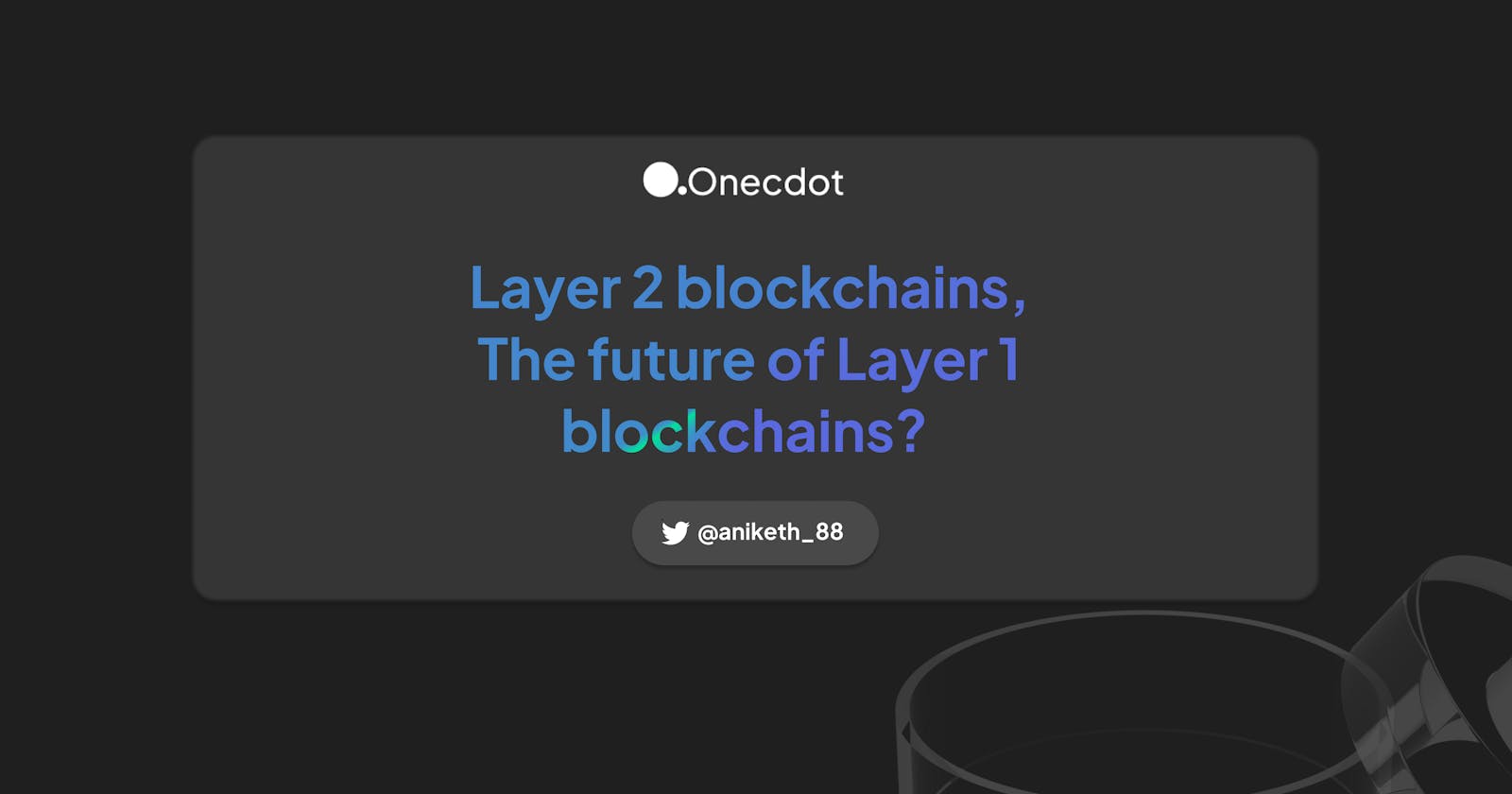Hey Everyone! I hope, you're doing well. Today, we will discuss network layering and why some crypto networks need to implement layer 2 for scalability and more efficient and cheaper transactions. But, before that I want the readers to go through my previous blog post and understand why scalability is important 👉 Link.
Intro
A Blockchain should consist of three things:-
Scalable
Secure
Decentralized
Now, Blockchains like Bitcoin and Ethereum have often described as layer 1 blockchains or layer 1 chains because they settle every transaction that happens in the network. This is unfortunately led to scalability problems and high fees when there are many transactions taking place in the network.
What is Layer 1 Blockchain?
The term "Layer-1" is a basic main blockchain architecture. It is a set of solutions that improve the base protocol itself to make the overall system a lot more scalable. We can take the example of the Lightning Network and Bitcoin where Bitcoin is a Layer-1 network, whereas lightning is a layer-2 network.
Limitations of Layer 1 Scaling
- Limited Block Size
- Centralized mining process
- Low Throughput
- Compromised Security
- Higher Gas Prices or Computational Power
What is Layer 2 and how can it help?
Layer 2 is basically built on top of Layer 1 blockchain and it's built on top of this chain in order to improve scalability. It creates a secondary framework where these transactions can now take place independently of layer 1 or what we say is often " off the chain" and this allows the scalability to happen. As a result, the layer 2 solutions have the potential to actually achieve high throughput which means that transactions can go through very cheaply and quickly without sacrificing network security.
A great portion of the work that would have been performed by the layer 1 chain or the main chain has now moved over to the second layer. So, while the main chain provides the security, the second layer offers a throughout being able to perform hundreds and thousands of transactions every single second.
Benefits of Layer 2 Scaling
- High Throughput
- Completely secure
- Decentralization
- Lesser Load on the Base Layer
- Extreme Scalability
- High transaction speed
Let's take an example of Ethereum layer 2 scaling 👇
Ethereum Layer 2 Scaling
Ethereum scaling has been one of the most discussed topics pretty much since the time when the network launched. The scaling debate always heats up after a period of major network congestion.
One of the first periods like this was the 2017 crypto bull market where infamous CryptoKitties, together with ICOs, were able to clog up the entire Ethereum network causing a major spike in the gas fees.
This year the network congestion came back even stronger, this time caused by the popularity of DeFi and yield farming. There were periods of time when even gas fees as high as 500+ gwei would not get your transaction verified for a while.
When it comes to scaling Ethereum or blockchains in general, there are 2 major ways of doing it: scaling the base layer itself (Layer 1) or scaling the network by offloading some of the work to another layer - Layer 2.
When it comes to actual scaling solutions there are multiple options available. Whilst some of the options are available right now and can increase Ethereum network throughput in the near to medium-term, others are aiming for a medium to long-term time horizon.
Some of the scaling solutions are application-specific, for example, payment channels. Others, such as optimistic rollups, can be used for any arbitrary contract executions.
Conclusion
The most significant impediment to the widespread adoption of cryptocurrencies is scalability. To ensure that cryptocurrencies are scalable and quickly enough during the day transactions, we need protocols designed specifically to address this issue.
